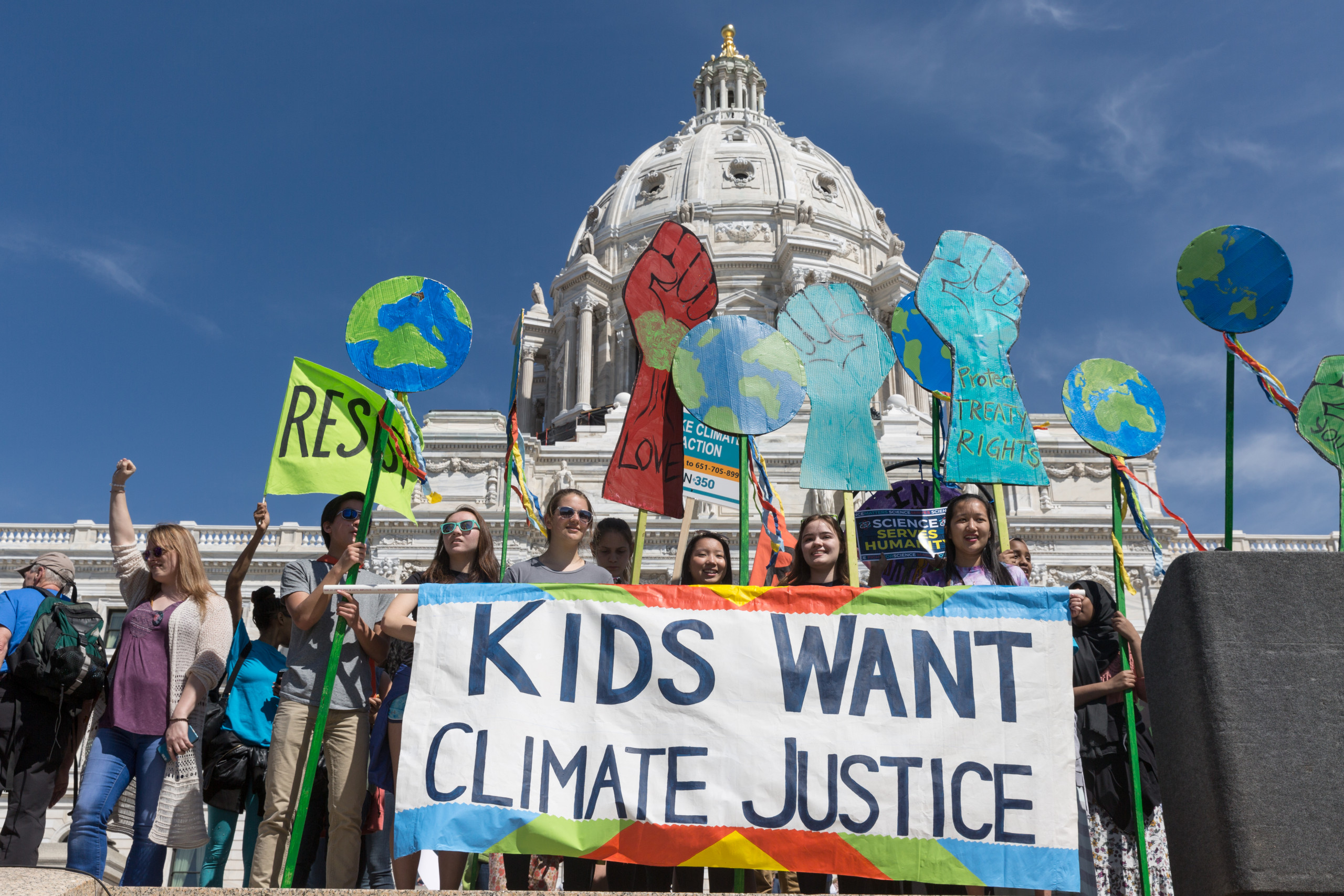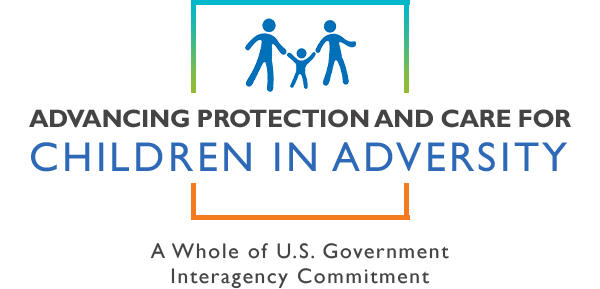Fragile Futures: How Climate Change is Reshaping the Lives of the Younger Generation
Written by: Kyleigh McGrail
April 2024

Participants of March for Science in Saint Paul, Minnesota. Photo credit: Lorie Shaull
“…Young people are the reason this COP has the energy it has. They’re the reason (for) whatever progress we’ve made, and we know it’s woefully insufficient, that’s because young people have stepped up and said they deserve more.”
USAID Administrator Samantha Power, COP 28
The 28th United Nations Climate Change Conference (COP28) brought world leaders together in a crucial endeavor to address the escalating climate crisis, placing the spotlight on its profound impact on the younger generation.
Today’s children are inheriting a crisis not of their own making, and the effects of climate change will shape their lives and futures more than any other demographic. According to recent studies, children born in 2020 will face a two- to seven-fold increase in extreme events, particularly heat waves, compared to those born in 1960.
Climate change is not just an environmental issue. It is a child rights crisis. The implications for children’s holistic health and well-being are significant, with cumulative environmental stressors exacerbating vulnerabilities across multiple sectors including nutrition, water, sanitation, healthcare, housing, and education. As climate-induced disasters continue to increase in scale, frequency, and intensity, child protection and care risks also increase. Social protection mechanisms are failing to meet the increasing needs of the most vulnerable children and their families, and the climate crisis has intensified parents’ struggle to provide a stable environment for their children.
The 2021 release of ‘The Children’s Climate Risk Index (CCRI)’ by UNICEF, in collaboration with Fridays for Future, marked a groundbreaking analysis of climate risk from a child’s perspective, revealing that nearly half of the world’s 2.2 billion children – approximately 1 billion children – live in one of the 33 countries classified as “extremely high-risk.”
Immediate and decisive action is needed to protect and secure the well-being of the younger generation.
The climate crisis is fundamentally transforming all aspects of child well-being that the U.S. Government Advancing Protection and Care for Children in Adversity Strategy (APCCA) addresses, including family care, early childhood development, and child protection. According to UNICEF, the impact on families and their capacity to care for their children is of particular concern in the Eastern and Southern Africa regions.

Rebecca Anyuduk washes dishes with her children watching in Kanyangapus, Turkana County, Kenya. Turkana County is experiencing one of the worst droughts in decades, following the failure of four rainy seasons. Photo credit: ©UNICEF/UN0690484/Paul Kidero
Kenya is one of the countries where children are most at risk based on the CCRI, which is structured according to exposure to climate and environmental hazards, shocks and stresses, and child vulnerability. Children born in Kenya in 2020 will confront 4.6 times more droughts in their lifetimes than sixty-year-olds. In comparison, a child in Western Europe is projected to experience roughly similar exposure to droughts as past generations did.
How Climate Change Erodes Kenyan Families’ Capacity to Care for & Protect their Children
“One woman explained how torrents of water washed away her few precious possessions including the mattress she and her baby sleep on.”
UNICEF Executive Director Catherine Russell
In the drought-stricken region of Kajiado County, Kenya, the profound impacts of climate change on children and their families have surfaced as a pressing concern. The devastating effects of unpredicted droughts, which are widely attributed to climate change, have ravaged cattle herds, leading to increased poverty and hunger among communities. While some understanding has emerged regarding the adverse effects climate change has on child well-being, the linkages between climate change and children remain understudied.
To bridge this knowledge gap, a study on the impact of climate change on children’s care was conducted in Kajiado County. The study was carried out as part of the Eastern and Southern Africa regional learning platform, established by UNICEF and Changing the Way We Care with USAID Children in Adversity’s support. Interviews were conducted with key child protection and care stakeholders within Kenya, shedding light on the impact of drought on family dynamics and care arrangements within the community.
Findings indicate that the drought has increased many of the drivers of family separation, including poverty, stress and violence in the home, and lack of access to education. This has led to an increase in family separation with children leaving the family in search of work as well as an increase in child marriage and unions and placements in residential care. For example, Kajiado has seen an increase of desperate families who can no longer afford to feed their children and are seeking to place them in residential care.
In addition, the process of reintegrating children already living in residential care back into families is becoming increasingly difficult. In some cases, parents are no longer at home to care for the child as they have had to migrate for work. In other instances, families are unable to provide appropriate care, putting the child at potential risk of future separation if reunified without the needed support. As a result of the drought, the capacity of extended families to provide care for children who are not able to be reunited with their parents has also been significantly reduced. This has led to children placed in kinship care to be successively separated for work, child marriage, or through placement into residential care. Despite significant care reform momentum, the drought seems to have slowed the progress made in reducing the number of children in some residential care facilities.

Mahuba Abdikadir (in yellow) with her grandchildren outside their home in Rigdam village, Modogashe, Kenya. Only eight of the 150 families still live in the village; most of them have moved away with their cattle in search of water and pasture. Mahuba (60) looks after her seven grandchildren because their parents have also moved on with the remaining goats. Photo credit: ©UNICEF/UN0758210/Sandra Bulling
Recognizing and responding to climate change must be integrated in all care reform processes in the region–as well as around the world. And, as climate change impacts poverty and emotional wellbeing, care reform efforts must incorporate social protection and mental health. More specifically, UNICEF’s “Building climate change into care reform in Eastern and Southern Africa” report calls on policy makers and non-governmental organization practitioners in Eastern and Southern Africa to ensure their strategies recognize that changes in children’s care are closely linked to other child protection concerns. For example, the support provided to families and their children who are at risk of being placed in residential care needs to account for the growing drivers of family separation, such as child marriage and child labor. Furthermore, as families face increased adversities, climate change creates even greater impetus for reallocating resources away from residential care and towards families; efforts on families strengthening and de-institutionalisation must be strengthened.
APCCA and partners recognize and are responding to the immense challenges posed by climate change to safeguard the well-being of children. By addressing the linkages between climate change and children’s care, we can foster resilient families and communities, ensuring a brighter future for generations to come.
“Climate change is the greatest threat facing the world’s children and young people. And so we too are rising.”
Fridays for Future youth climate activists Adriana Calderón, Farzana Faruk Jhumu, Eric Njuguna, Greta Thunberg
Shaping the Future of a Sustainable Generation
In the midst of the challenges posed by climate change, there lies a collective responsibility to safeguard the fragile futures of today’s children. It is imperative that we bridge the gaps, transcend borders, and work together with unwavering commitment to ensure that the younger generation inherits a planet that is not only liveable but thrives with natural resources.
The APCCA strategy update places the climate change crisis at the top of U.S. Government priorities for vulnerable children for the next five years, recognizing that we can’t move forward without taking a coordinated, systemic approach to support children and their families by strengthening their resilience and protecting them to weather future crises.
As we navigate the complexities of climate change, the key to a sustainable future rests in our shared determination, unity, and the understanding that the actions we take today will shape the world our children will inherit tomorrow. Together, with the youth of today leading the charge, we hold the power to foster hope, resilience, and a harmonious relationship with our environment, securing a legacy that transcends time and reflects our commitment to the well-being of generations yet to come.






